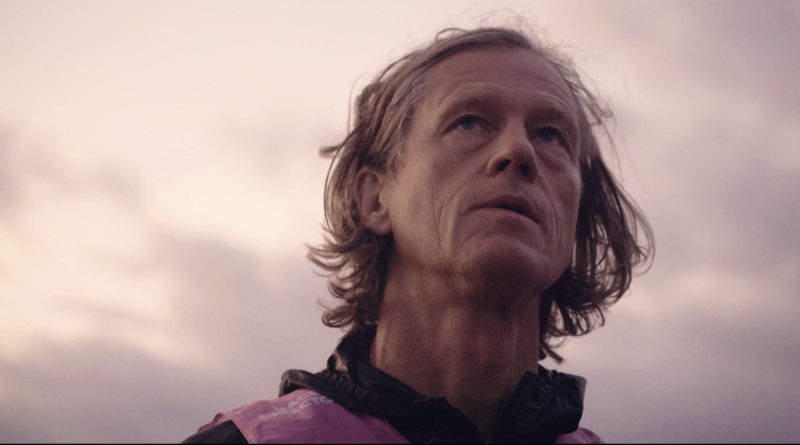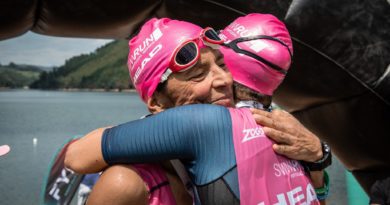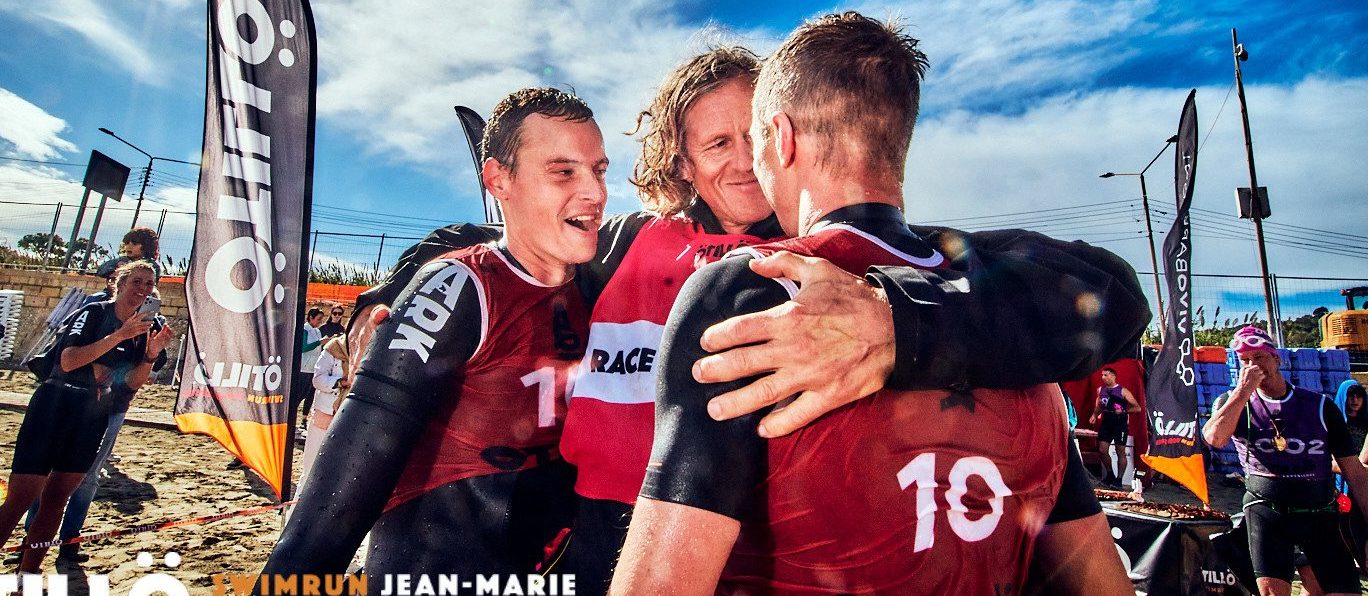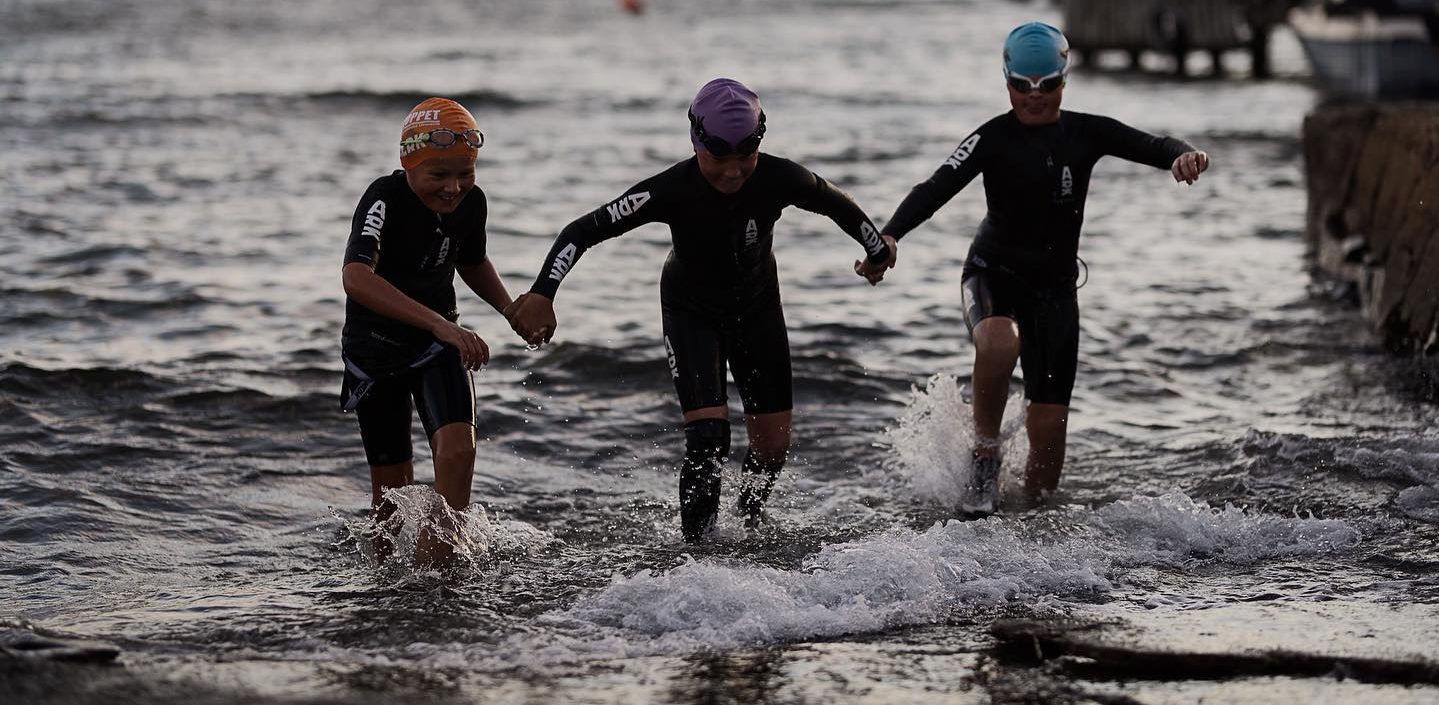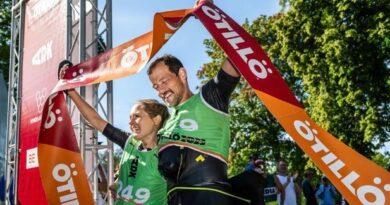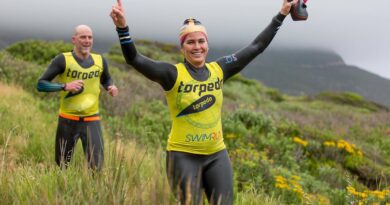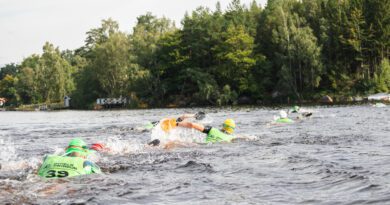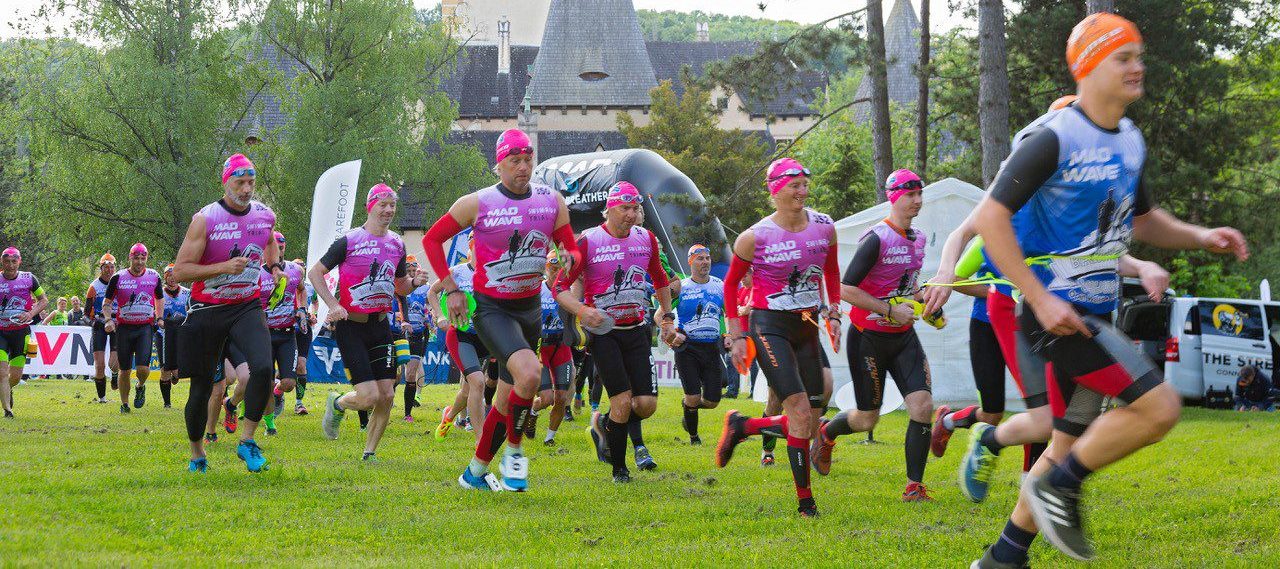Swimrun Growing Pains: Creating A Global Sport. Exclusive Column From Michael Lemmel
This is a guest expert column from Michael Lemmel, co-founder of ÖTILLÖ and the sport of swimrun. In a shock announcement earlier this year, Michael and Mats Skott left ÖTILLÖ. This is the story of growing ÖTILLÖ through the years, raw feelings of no longer being part of the world’s most celebrated swimrun brand, of lessons learned and where the sport of swimrun might go next. Photo credit: Matteo Passigato.
Reflections From A Small Island In The Baltic Sea
Today I am on Sandhamn. For completely other reasons than swimrun. Driving from my home through the archipelago to Sandhamn I more or less follow the ÖTILLÖ track. It fills me with so many emotions. Awe, pride, love and sadness.
I am sad that Mats and I no longer are involved with ÖTILLÖ and everything we created together.
After mooring my boat in Sandhamn I run into someone on the dock who grabs me. Are you not the guy who started ÖTILLÖ? I explain that I was one of the guys but that I no longer am involved since the new year. He looks at me and says:
”Be proud, you have created a beautiful brand. His words filled me with pride as I know that what we created was more than a brand, it was a community”
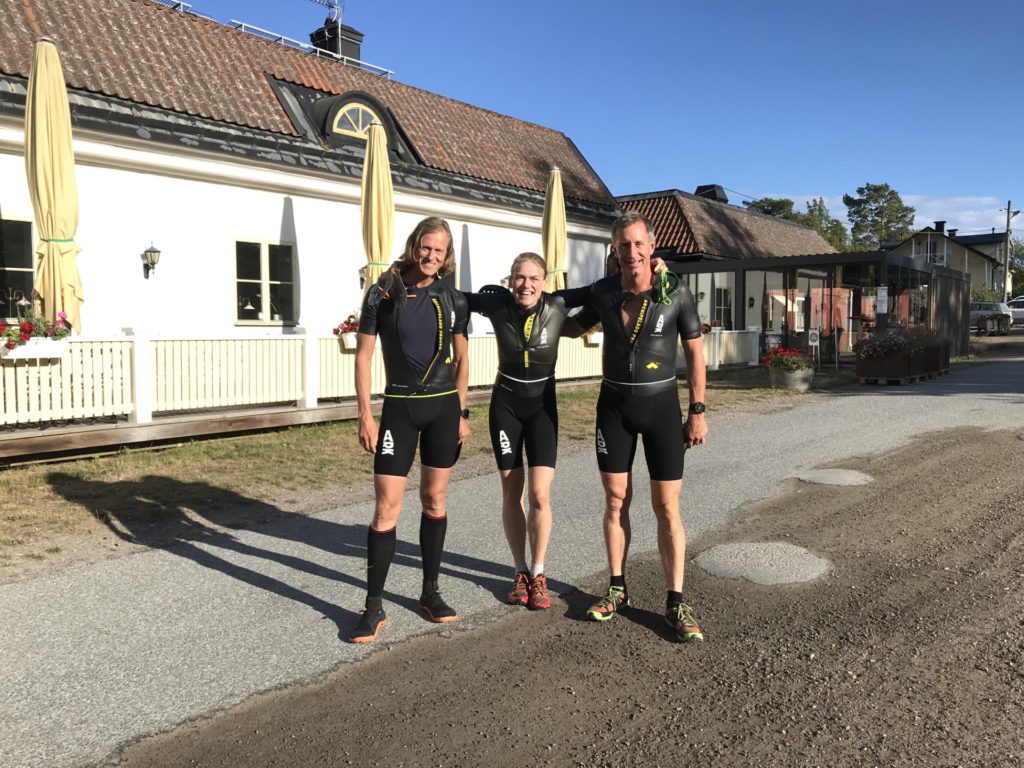
The original core team of Michael Lemmel, Johanna Edin & Mats Skott
ÖTILLÖ Swimrun 2006 – 2023
The following is a bit of a retrospective of our journey through the years.
2006 – In September, the first ÖTILLÖ was held. From Sandhamn to Utö with 9 teams on the start line. Only two teams finished. The winners, Nokia Adventure racing from Finland, current adventure racing world champions, came to start with two air mattresses. As the wind was favourable they flew down the course on top of their LiLo’s. This is what made the first rule of ÖTILLÖ where the size of the flotation was limited.
2007 – The race started from Utö to Sandhamn – the original idea was to alternate the direction every year, like the Comrades Marathon. As we had a big sponsor we needed more teams on the start line. The night before the race we had 8 teams, we went to the bar at Utö and coerced 5 teams to start, saying that they could quit after the start line. We started with 13 teams. Of which one was a Navy Seals team that just had come from deployment, one of them with a serious stomach bug. He had to quit half- way through. The other continued with someone else who had lost a partner along the way. Three teams finished of which one was not ranked, as it was a mixture of two teams. Winners were Martin Flinta and Ted Ås, whom we forced to swim the last 100 metres to Sandhamn after waiting on the last island and wanting to give up because one of them was too cold. This is the reason why we decided after that to only go from Sandhamn to Utö. Having the longest swim be the first and not the last.
2008 – Again, our sponsor said that we had to increase the number of racers and finishers. So, we made the drastic measure, we decided to put out 3- speed rental bikes from Utö for the whole section on Ornö (20 km). We had around 23 teams that started and around 70% finished.
2009 – Still bikes on Ornö. We had more than 60 teams. We did not have enough bikes, as people were better than we expected. We managed to transport bikes from the bottom of Ornö to the top with minutes to spare and without the teams noticing. This made us decide to not continue with the bikes.
2010 – We were losing lots of money so we decided we had to triple the entry fee to at least go break-even. Along with this we took away the bikes from Ornö. This was one of our early tipping points. Would we have teams that were willing to pay more and not have bikes on Ornö? We sold around 80 spots quickly. Now the big question was… Would teams finish considering the NO BIKES? More than 70% did, it was as if the mental barrier was gone with so many having finished the year before.
2011 – We heard of a birthday party at Ånga, which was based on ÖTILLÖ. Cool. The guys who organized it had been volunteers. We had more than 100 teams; we had more than the double on the waiting list. ÖTILLÖ was talked about everywhere in the world.
2012 – Erika Rosenbaum asked us if she could use the word ”Swimrun” to describe what we were doing. We said YES and asked her if we also could use it. She said YES. Ångaloppet, Amfibiemannen and Öloppet all saw light as copycat races produced by previous ÖTILLÖ racers. We decided that we would call ÖTILLÖ, The Swimrun World Championship. Since then that is what it is. We filled the course within minutes of opening the entry. We started with 120 teams, with hundreds on the waiting list.
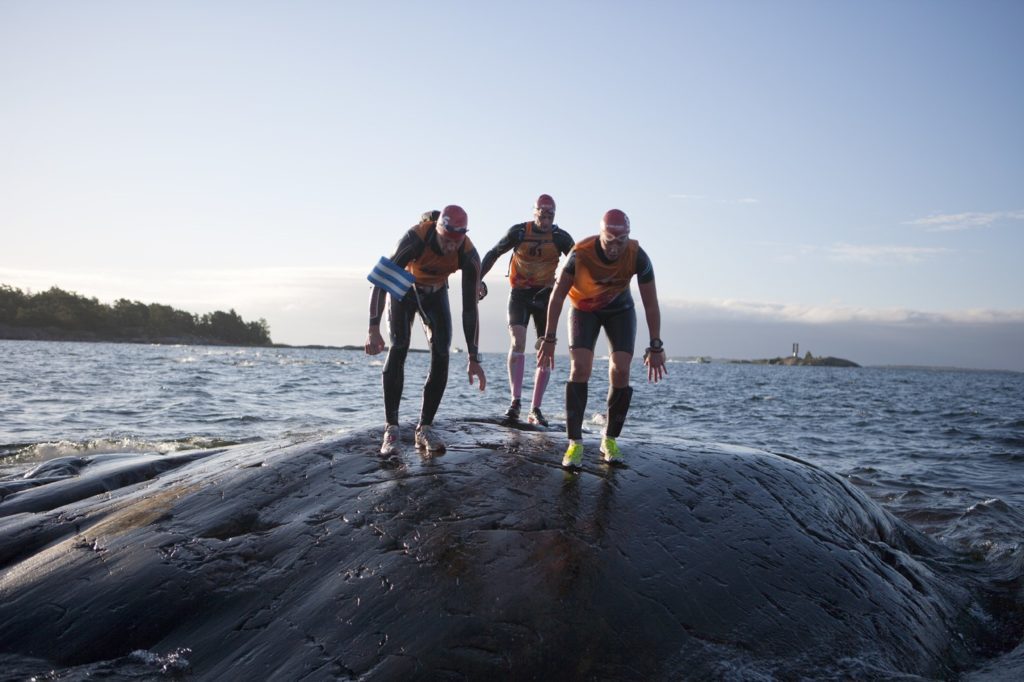
2012: small hand paddles instead of no hand paddles. Wetsuits: full or cut tri-suits.
2013 – We added Utö Swimrun (now called ÖTILLÖ Swimrun Utö) to offer those without a spot an alternative in the spring and also made it a race where 8 teams could qualify. All others applied via written applications that we read through and selected teams from. Several hundred on the waiting list.
2014 – We added Engadin swimrun (ÖTILLÖ Swimrun Engadin) in Switzerland. To grow the sport outside of Sweden. It was the first race outside of Sweden together with Rockman, in Norway which was held on the same weekend. We realised the need for an international partner to manage and finance the growth of our sport on an international level and were introduced to TRIDEM SPORTS AG in Switzerland by a mutual friend. The owners believed in the potential of our sport and we created SWIMRUN AG to manage all races outside of Sweden.
2016 – We added Isles of Scilly and 1000 Lakes. We created a ranking system, which is used for ÖTILLÖ Selection. It was the first year with World Championship winners under 8 hours.
2017 – We added ÖTILLÖ Swimrun Hvar.
The year with a massive storm the day of the World Championship race. We decided to go ahead as the wind was in the only direction it would have been possible in. The year is still talked about.
2018 – We added ÖTILLÖ Swimrun Cannes.
The absolute opposite of 2017 with flat-water and warm weather for the World Championship. First year with 160 teams thanks to our move to Djurönäset from Sandhamn for the pre-race night. From which everyone takes a ferry in the morning to the start in Sandhamn. 7:39 as winning time. Amazing, how far can they go? Course records in Women and mixed too.
2019 – The World Championship. 160 teams. Best field ever. Unfortunately the only World champions on the start line was Fredrik Axegård & Alex Flores (men) and Martin Flinta (mixed). Others were either injured or just mothers (Kristin Larsson).
2020 – No World Championship. Only Catalina (before Covid), Engadin and Cannes. We also did a 6 x 50-person Sprint Final15K on Utö. Four of us in the production team spent 10 days in Covid quarantine in Engadin before the race to be able to put it on.
2021 – Utö, Engadin, Gothenburg (new location), Sprint Final 15K, World Championship, Cannes and Malta.
The World Championship. A great number of very strong teams and a wide number of possible podium racers in all three categories. The only returning World Champion was Desirée Andersson, but this time in Mixed with Victor Dahl. The others were either injured or had an injured team mate.
2022 – A perfect race day at the World Championship with course records in all three categories.
January 2023 – Michael Lemmel & Mats Skott decide to leave the company as they had different opinions on the way forward compared to the majority owners. Tridem AG now manages the entire ÖTILLÖ brand.
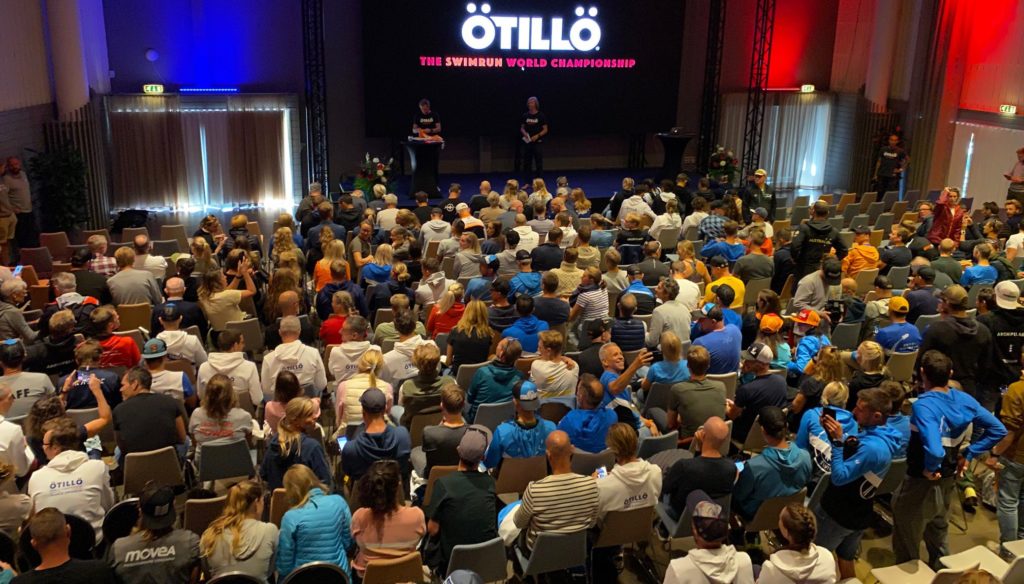
What have I learned?
The number one thing that stands out is that Mats and my passion for pushing the limits in nature became our compass for building first a race, then a sport and finally most importantly, a community. Where our values became the values of a whole sport.
We have also been opportunistic and dared to go for it. With the knowledge that we can always go back on decisions.
We have of course not always agreed on our next step. I was very much against opening up for solo racers as an example. But in hindsight it has been the right decision as it has opened up the sport to more people and created a broader base.
I look forward to seeing new formats develop from short, fast races to multi-day expedition style races. Looking at how it seems now the majority of all participants are in the 20-25 km distance. From having been in a longer distance before. This also reflects our entire society where people are trying to fill their free time with more activities. This then reduces the total training hours needed for longer racing.
The sport has also become more and more an activity you do with friends. Without the ambition to race. With the sole purpose to have a good time and stay fit. This continues to broaden the base. Something that in the end is needed for the sport to take the next big step.

Photo credit: Ark Sports.
What is the next big step?
France is really showing the way. I am not a fan of Sports federations and static organizations. I have also been against swimrun becoming part of the French Triathlon Federation.
But, it is good to take a step back and see what is happening. Thanks to the federation all triathlon clubs need to have a swimrun section. Young triathletes, teenagers, get exposed to our sport and there is real growth. It might not be the swimrun that I personally love but it is swimrun. It opens the door to our sport for so many more who then can go out and explore on their own.
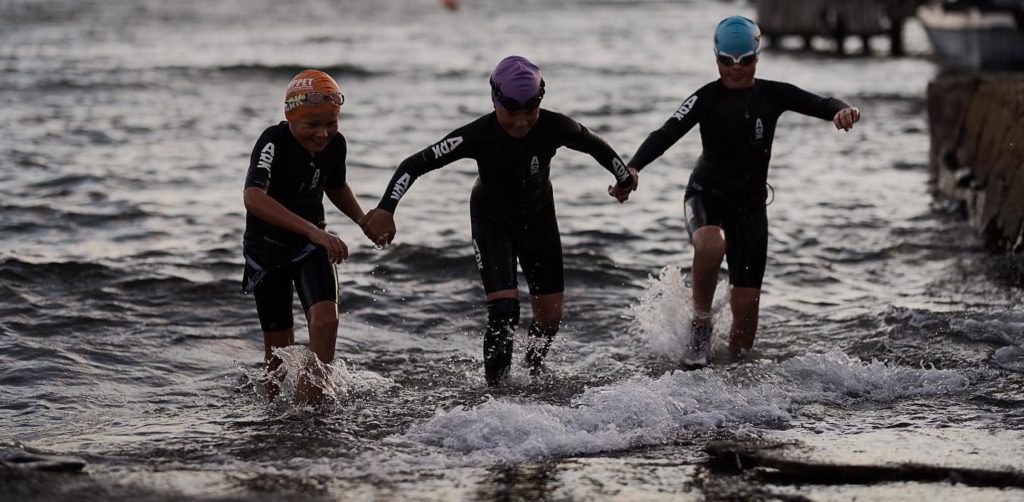
Photo credit: Ark Sports.
”For someone having been against federations I believe that the next big step for our sport is when it gets organised on a national and international level. What the entity is I do not know but when that happens we will reach the next level”
Does this mean the end of swimrun as we know it?
Why would it? More people who learn and practice our sport will bring more people into the community and learn from the community. There will always be many different types of races and different types of race organisations. Some may be part of a bigger cause, others will not. The most important is that we need more people in the sport for it to survive for coming generations.
That will also bring another benefit, that of wanting to do good for nature. We are so immersed in nature in swimrun that it will be impossible to not feel for nature.
Mats and I both want to be part of the future of swimrun. On a broader level where we can help start fires here and there and be tools for the growth of the sport we have created together. We might also organize a race or two.

